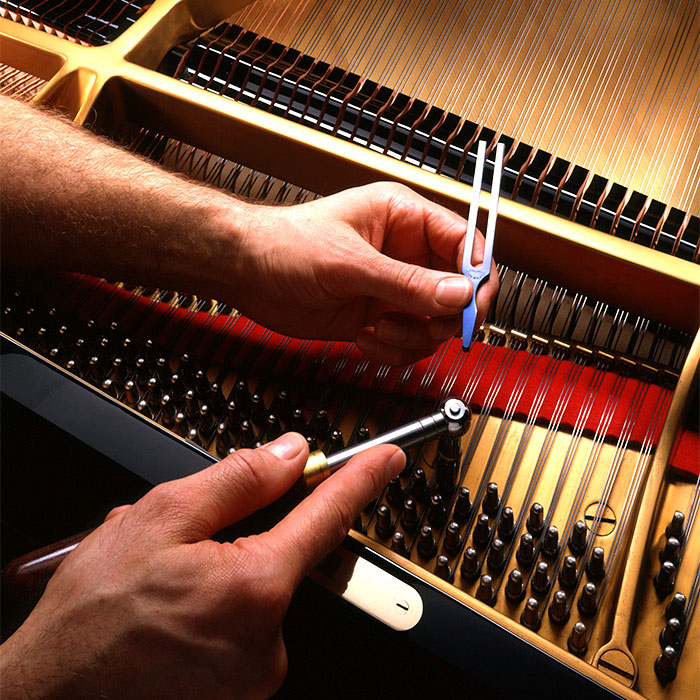
Tuning
The tuning of the piano is a particularly difficult process, which the pianist cannot do on his own because he needs special equipment and a lot of specialization. With the tuning we adjust on the one hand each chord to the correct tonality, on the other hand we tune the double and triple strings in order to achieve full tautophony between them. A special tool is used that is applied to each key with a specific sequence and with precise movements we bring each chord to the tonality that should be. The frequency that has been internationally adopted is that of A-440 Hz so the adjustment of each tone is always done in relation to with this basis with mathematical precision. If we are asked, for specific cases, the match can be done on a differentiated basis e.g. A-442 Hz. (usually when the piano plays with other instruments that have another tonality).
But a mathematically perfectly tuned piano is “wrong”, because the tuning is not completed only by adjusting each note to the correct tonality,so the technician is called to wind up with the ear and correct false sounds and disharmonies with his acoustic experience.
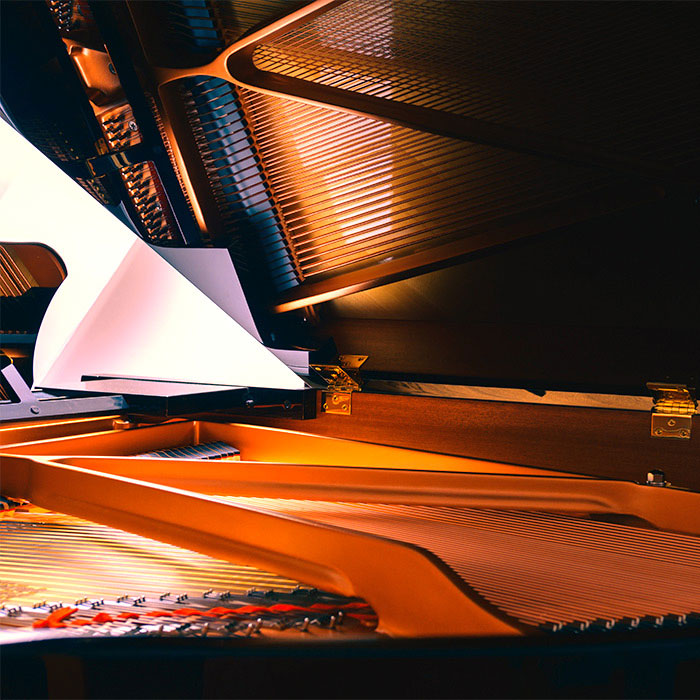
Tone Upload - Customization
If you have left your piano untuned for more than two years, surely a simple tuning is not enough to regain its lost tonality,which will now be quite far from 440Hz. So the technician will have to adjust the 230 or so strings of the piano 2 and 3 times, in order to restore the piano to the correct tonality. If the piano is old and at the same time too low, this process can cause the breaking of some strings, which will need to be replaced. This process may take a few weeks to complete the tuning and stabilize the tonality of the piano.
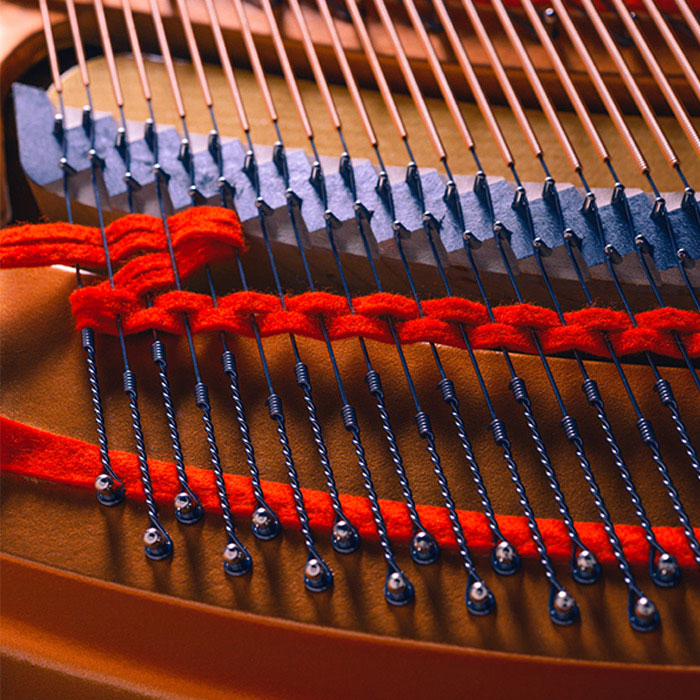
Stringing Frequency
The humidity and the good condition of the tuning keys, is the main reason that your piano loses its tune. For this reason, the tuning of the piano should be done at least once a year, even if it is not used.
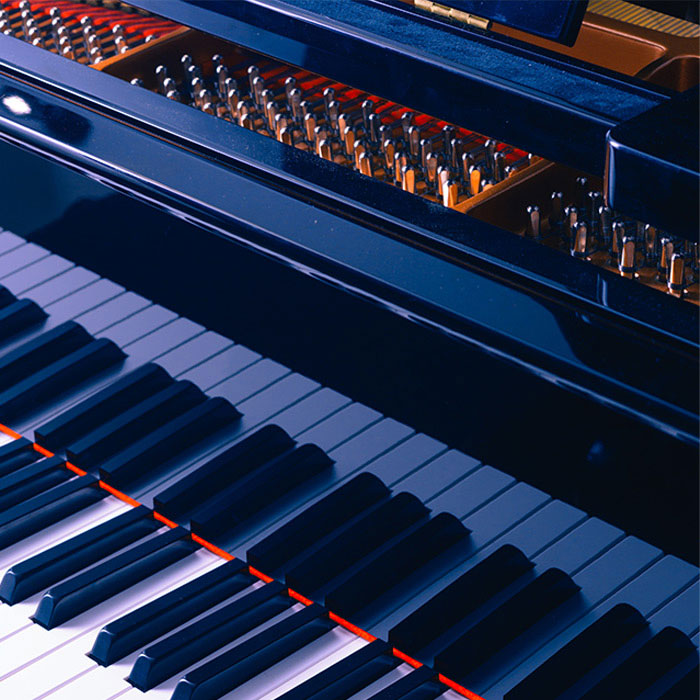
Regulating
Within the basic tuning, regulation is also controlled, a piano that is maintained normally (once a year) has so much wear that it is covered in one visit and at the cost of a tuning. If your piano is not properly maintained it takes much more time, method and materials and costs more.
There are more than 30 different settings, multiplied by 88 keys. We start from the base of the keys and as we move to the center part of the mechanism and then to the hammers, we often go back to previous ones. A complete regulating (if your piano is in bad condition) can last days, but in the annual maintenance we do one or two things each time and we check the rest.
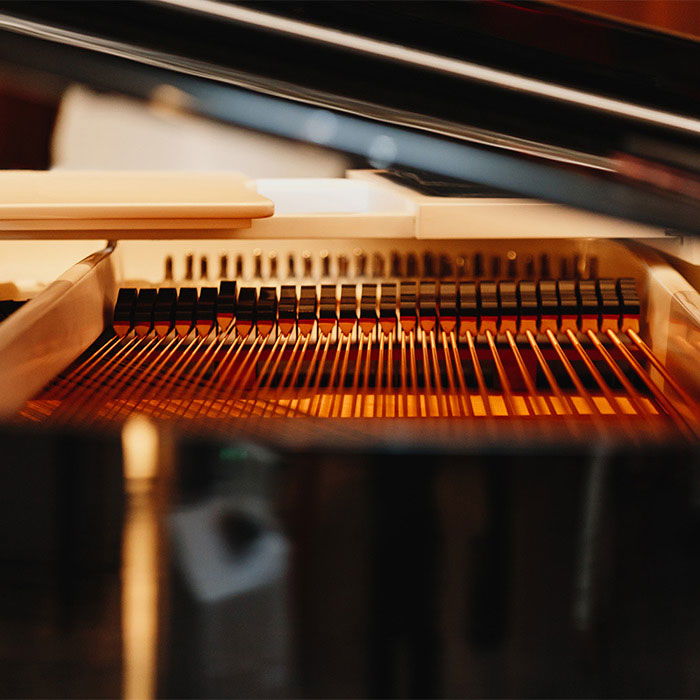
Voicing
With this technique we can bring back the “lost sound” that your piano once had, or even make it softer in feel. It is an excellently complex task that is mainly applied to hammers and requires special equipment and increased acoustic abilities; if the result still does not satisfy us, the last stage is the change of hammers with better quality.


